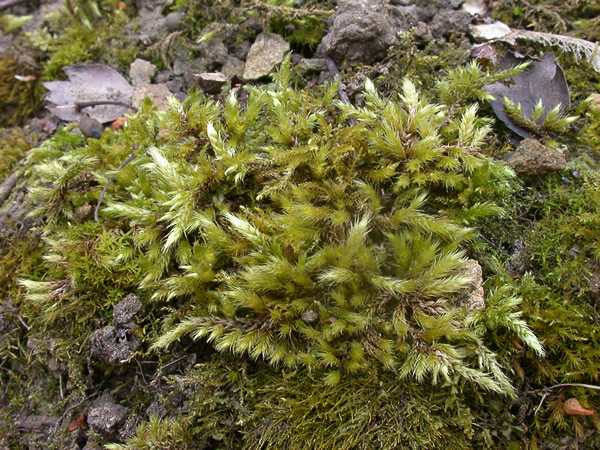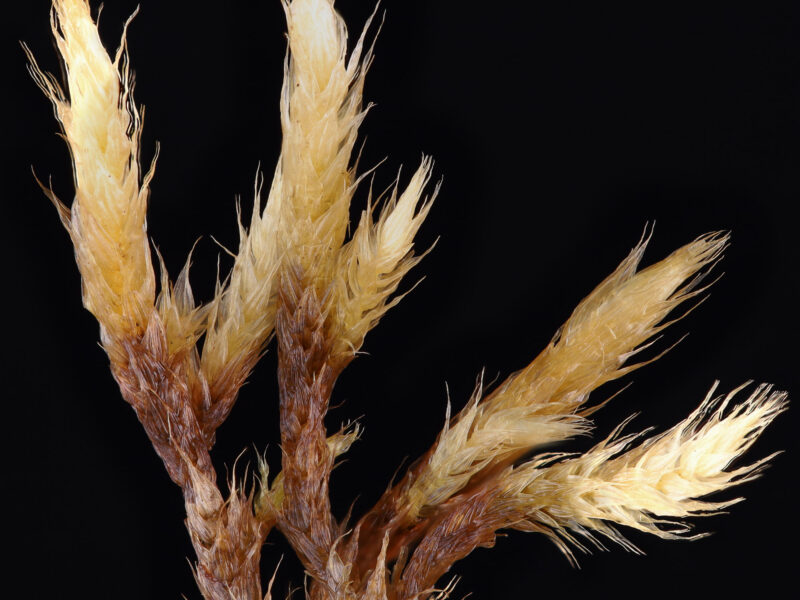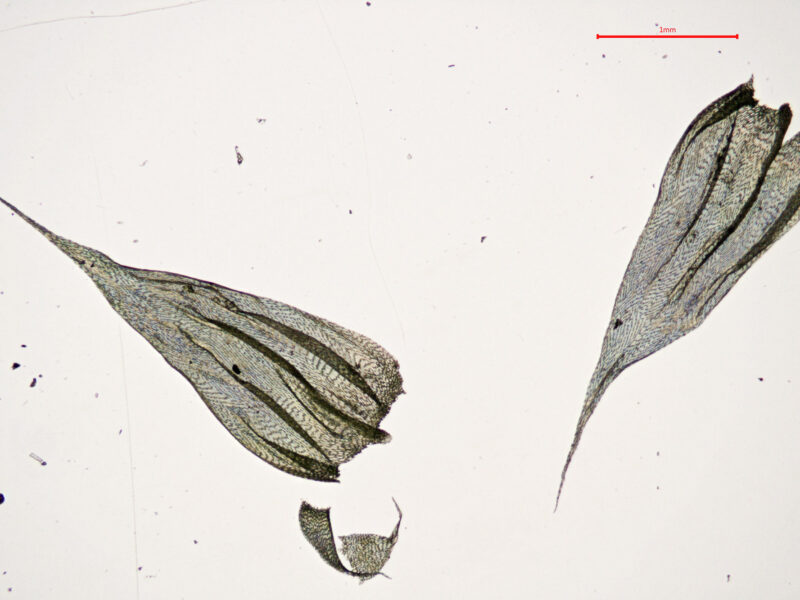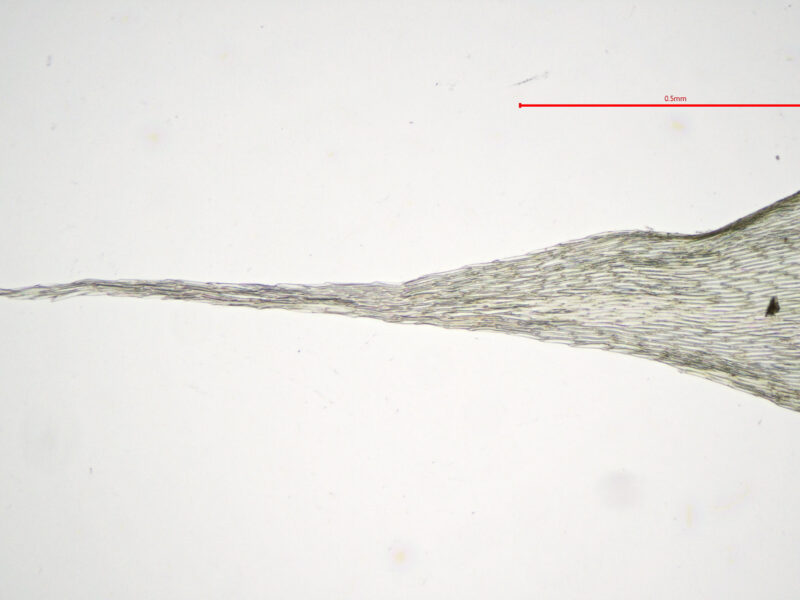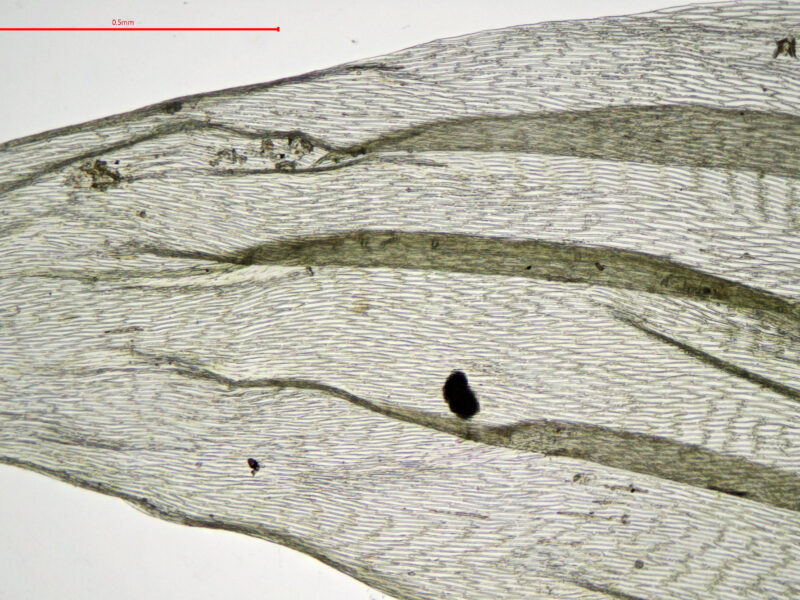Identification notes
Although widespread in base-rich places, B. glareosum is easy to overlook or confuse with B. rutabulum, with which it often grows. But…in the field there are subtle clues that you are looking at something different. The colour of the plants, for example – they are typically pale golden-green, plicate and silky-looking. Then there is the leaf shape; examine a main stem with your hand lens and the drawn-out, hair-like tips of mature leaves should be clearly visible. En masse, this has the effect of making shoots look a little prickly. It can be harder to see the tell-tale twisted leaf apex with a lens so a microscope is recommended. Don’t expect all the leaf tips to have this feature though – you may have to examine several shoots to be convinced.
B. glareosum also often grows with Homalothecium lutescens, and it can be quite difficult to tell the two apart. Again colour can be helpful: H. lutescens tends to be a more golden colour and B. glareosum paler and greener; H. lutescens also has narrower, more plicate leaves. For difficult specimens though, there is one microscopic character that can be very useful: the basal cells of H. lutescens are often porose, whereas those of B. glareosum are not. You will find a photo of this on the Homalothecium page.
Read the Field Guide account
